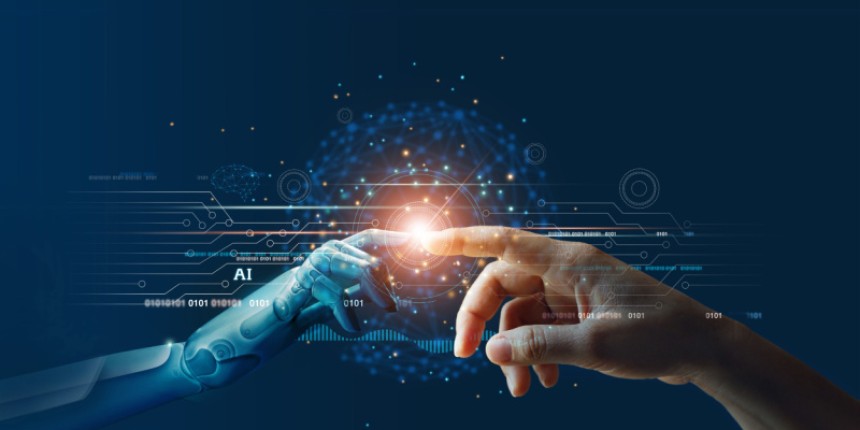
Qandeel Fa... @Qandeel 2 months ago I have recently read similar topic in my curriculum... This is really helpful. Great work!

Learn how to build custom AI solutions tailored to solve specific business problems, from data gathering to model integration and scaling.
In today’s rapidly changing business landscape, artificial intelligence (AI) is a powerful tool to solve a wide range of challenges. Organizations are increasingly looking for tailored AI solutions to address their unique issues and improve their operations. From automating routine tasks to analyzing vast amounts of data, AI can be tailored to meet the needs of different industries. Building custom AI solutions allows businesses to maximize their potential by directly addressing their specific challenges.
This blog will provide practical steps for developing custom AI systems that can solve particular business problems. Whether you're in retail, finance, manufacturing, or any other sector, this approach will guide you on how to align AI with your company’s goals and objectives. For businesses seeking assistance, custom AI development services are available to provide expert help throughout the process.
Before jumping into the technical side of AI, it’s crucial to define the problem your business faces. AI solutions are most effective when they are built to solve clearly identified challenges. Ask yourself: What issue are we trying to solve? Is it related to improving customer service, optimizing inventory management, reducing operational costs, or something else? The clearer the problem, the more targeted your AI solution can be. Take time to break down the problem into smaller, actionable pieces. For instance, if you want to improve customer satisfaction, you may need to consider challenges like response time, service quality, or predicting customer preferences. By focusing on a specific aspect, you can avoid building an overly complex solution that might not directly address the core issue.
AI relies on data to learn and make decisions. To build a custom AI solution, start by collecting the data that is most relevant to the problem you wish to address. The quality and quantity of data you collect will significantly impact the effectiveness of your AI model. There are many different types of data that can be used in AI, such as structured data (e.g., numbers, dates), unstructured data (e.g., text, images), or semi-structured data (e.g., XML files, JSON). For example, if you want to create an AI model to predict customer behavior, you may need historical purchase data, customer demographics, and browsing behavior. The key is to ensure the data is comprehensive, clean, and accurate. Sometimes, businesses may need to generate new data through surveys, sensors, or monitoring systems, especially when existing data is not enough to build a robust AI solution.
Not all AI technologies are created equal, and different tools serve different needs. To select the right AI tools for your business problem, consider the following common approaches: Machine Learning (ML): ML algorithms learn from historical data to make predictions or decisions. For example, if your goal is to predict sales trends, you could train a regression model on past sales data. Natural Language Processing (NLP): NLP deals with understanding human language. It can be used for tasks like sentiment analysis, chatbots, or text-based recommendation engines. Computer Vision: Computer vision allows AI to interpret visual information from the world. If your business involves processing images or videos (e.g., quality control in manufacturing, facial recognition in security systems), this technology may be relevant. Robotic Process Automation (RPA): RPA automates repetitive tasks that are rule-based. If you want to automate tasks like data entry, form processing, or invoice generation, RPA could be a good fit. Selecting the right technology requires matching the AI method to your specific problem. In some cases, businesses may need a combination of these technologies to achieve their objectives.
Once the data is gathered, and the AI technology is selected, the next step is to develop the model. A model is the core of any AI solution; it’s a mathematical representation of the problem that will allow the AI system to make predictions or decisions based on new input data. You can either build your own model from scratch or use pre-existing models, depending on the complexity of the problem and the resources available. Custom-built models give you more control over the outcome but can be more time-consuming and require expertise in data science, programming, and machine learning. You’ll need to write algorithms and tune parameters to optimize performance. Pre-trained models offer a faster solution for less complex problems, and they can be customized to your specific business. For instance, pre-trained models for natural language processing or computer vision can be adapted to your data to save development time. When building or selecting a model, ensure that you focus on accuracy, efficiency, and scalability. An AI model should be capable of handling increasing volumes of data as your business grows.
Training is the process by which an AI model learns to make predictions or decisions based on the data. During training, the model is fed large amounts of data, and through statistical methods, it adjusts its internal parameters to minimize errors. The training process involves several key steps: Data Preprocessing: Before training, the data needs to be cleaned and formatted. This may include removing duplicates, handling missing values, normalizing data, and transforming categorical variables. Splitting the Data: The dataset is usually divided into three parts: a training set, a validation set, and a test set. The model learns from the training data, is tuned using the validation set, and is evaluated on the test set. Selecting an Algorithm: Different AI problems require different algorithms. For machine learning, popular algorithms include decision trees, support vector machines, and deep learning networks. For natural language processing, models like BERT or GPT may be more suitable. Model Evaluation: Once trained, the model needs to be tested to evaluate its accuracy, precision, recall, and other relevant metrics. If the performance doesn’t meet expectations, adjustments to the model or data may be necessary.
After training, it’s crucial to test the AI model on real-world data. This helps ensure that the model works as expected and performs accurately outside of the controlled training environment. Testing can reveal any weaknesses in the model, such as overfitting (when a model works well on training data but poorly on new data) or underfitting (when a model doesn’t learn enough from the data). Testing is an iterative process. If the model fails to meet expectations, you may need to retrain it with more data, adjust the features or algorithms, or refine the parameters. Additionally, testing helps identify potential biases in the AI system. For example, if the AI model is based on biased data, it may make decisions that unfairly favor one group over another. Ensuring fairness and transparency in the testing phase is key.
Once your custom AI solution is built and tested, it’s time to integrate it into your existing business processes. Successful integration involves connecting the AI system with other software tools, databases, and platforms within the organization. For example, if you’ve built an AI-powered recommendation engine for an e-commerce site, it needs to integrate with the website’s inventory, customer data, and payment processing systems. Similarly, an AI tool for customer service should be linked to CRM (customer relationship management) platforms to provide real-time insights. During integration, make sure that the AI system is easy for employees to use. You may need to provide training or adjust workflows to accommodate the new system.
AI models aren’t “set it and forget it” solutions. After deployment, continuous monitoring is required to ensure that the system continues to perform well and adapt to changes. Monitor the system for accuracy, efficiency, and any signs of degradation over time. As the business environment changes, you may need to retrain the AI model with new data or tweak its parameters to maintain performance. Additionally, AI systems should be regularly checked for any ethical concerns or biases that may emerge as new data is collected.
Once your custom AI solution proves successful on a smaller scale, it’s time to think about scaling it. Scaling AI solutions can involve increasing the volume of data the model handles, improving the model’s computational efficiency, or expanding the solution to other business areas. For example, an AI system initially designed to predict sales trends in one region could later be scaled to cover multiple regions or even the entire organization’s global operations. This might involve adjusting the model to handle new data types or making the architecture more robust. Scaling also requires that you assess the infrastructure needed to support the increased demand. For instance, AI systems may require more powerful servers, storage solutions, or cloud-based resources.
Building custom AI solutions requires careful planning, a deep understanding of the business problem, and technical expertise in data science and AI development. By defining the problem clearly, gathering relevant data, selecting the right technology, and continuously testing and refining the system, businesses can harness the power of AI to address their unique challenges. For companies seeking expert assistance, leveraging custom AI development services can make the entire process smoother, helping businesses from ideation to implementation. With the right approach, custom AI solutions can significantly improve decision-making, increase efficiency, and create new opportunities for growth. Whether you are automating tasks, predicting trends, or providing better customer experiences, AI can be a game-changer for your business when applied thoughtfully and strategically.
Planning hibachi catering for a business event can be a fantastic way to impress your clie...


The online sports betting industry is booming, and businesses are looking for efficient wa...
